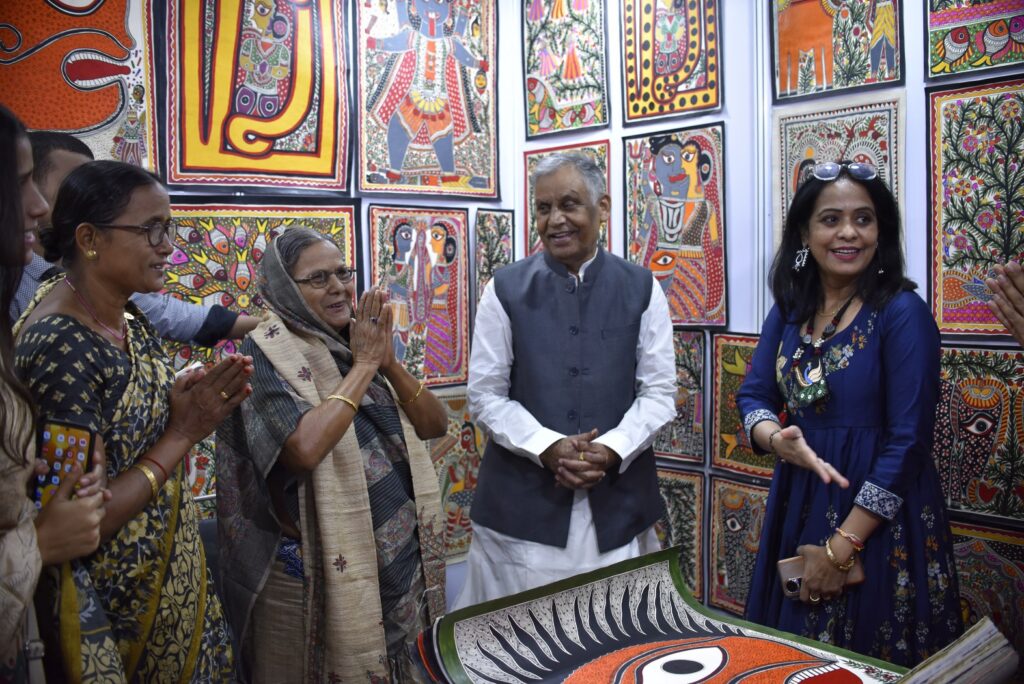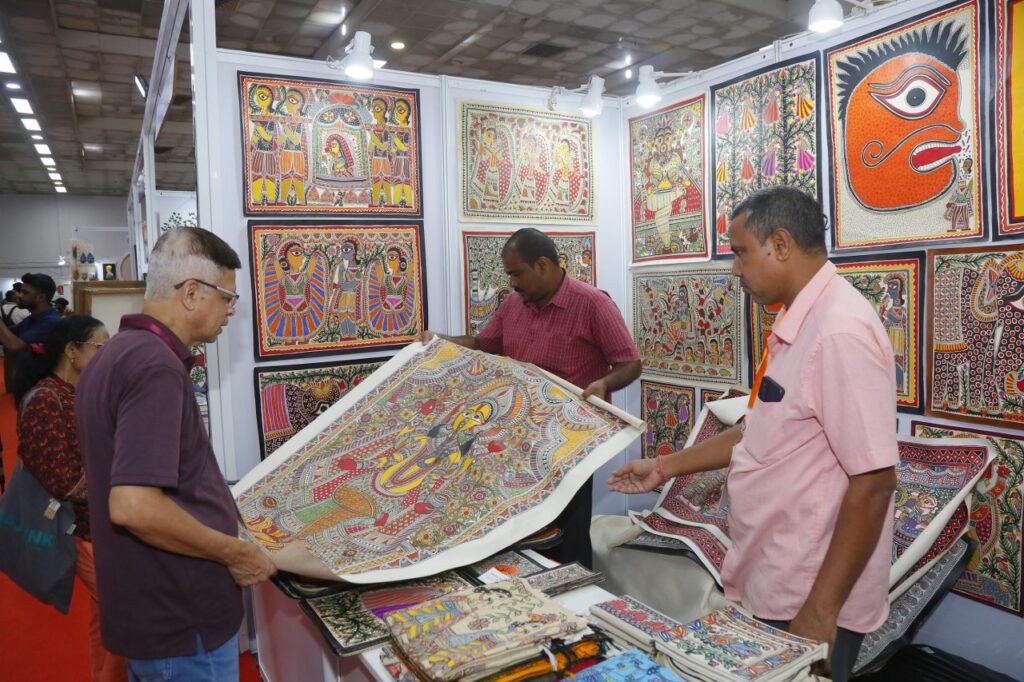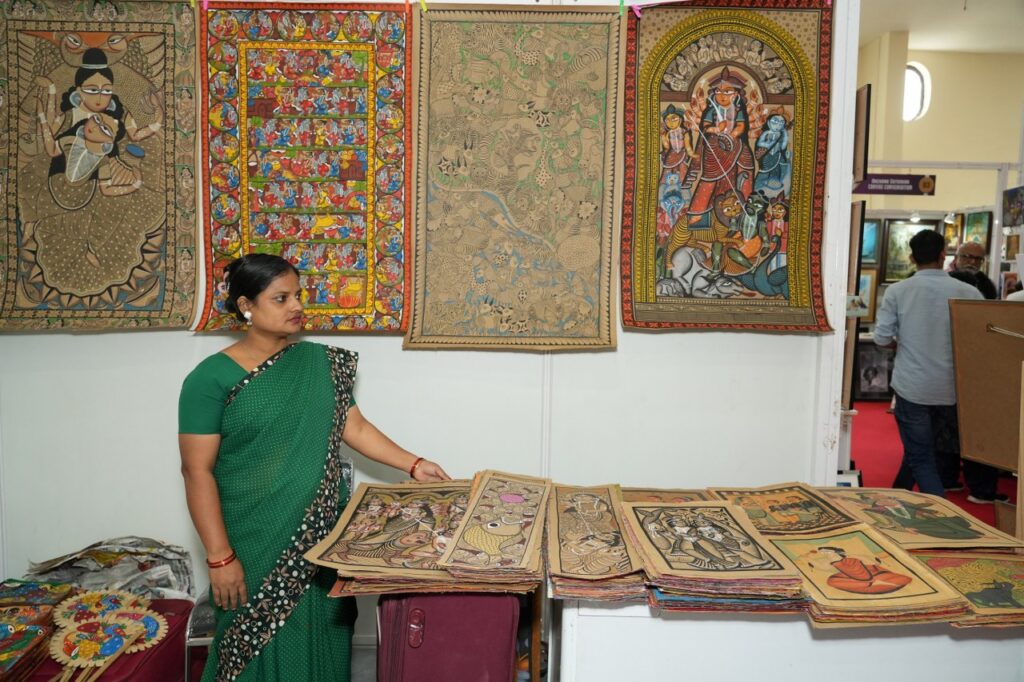India’s artistic heritage is rich and diverse, and among its many traditional art forms, Mithila painting—also known as Madhubani art—stands out for its vibrant colors, intricate patterns, and cultural symbolism. Originating in the Mithila region of Bihar, this art form beautifully captures the essence of rural life, spirituality, and devotion.
Origins of Mithila Painting
Mithila painting traces its roots to ancient times. According to legend, when King Janaka prepared for his daughter Sita’s wedding to Lord Rama, he commissioned local artists to decorate the palace walls. These murals, full of religious and cultural symbolism, laid the foundation for what we now know as Mithila painting.
Traditionally, this art was a domestic activity performed by women, who painted walls during festivals, weddings, and special occasions. There was a transformation as artists began transferring these designs onto paper and canvas, opening doors for national and international recognition.
Techniques and Materials
Mithila paintings are defined by:
- Surfaces: Originally walls, now also paper, canvas, cloth, and wood.
- Colors: Traditionally natural pigments—turmeric (yellow), indigo (blue), soot (black), flowers for red and orange.
- Brushes: Bamboo sticks, twigs, or cotton.
- Composition: No empty spaces; every area is filled with motifs, lines, or patterns.
The bold outlines and intricate detailing give each piece a unique vibrancy and charm.
Styles of Mithila Painting
Mithila painting is not a single style but a collection of regional styles:
- Bharni: Mythological themes with bright colors.
- Kachni: Fine linework with minimal color, focusing on patterns.
- Tantrik: Spiritual motifs and deities.
- Godna: Inspired by traditional tattoos, geometric patterns.
- Kohbar: Marriage-themed paintings, emphasizing fertility and love.
Each style reflects the cultural and social life of Mithila.
Themes and Symbolism
Mithila art often depicts:
- Mythology: Scenes from Ramayana, Mahabharata, and Krishna legends.
- Nature: Birds, fish, lotus, sun, and moon symbolizing life, prosperity, and eternity.
- Modern Themes: Women empowerment, environmental awareness, and social harmony.
Every painting tells a story, blending tradition with daily life and spirituality.

Famous Mithila Artist
Among the many talented artists, Baua Devi stands out. Hailing from Jitwarpur, Bihar, she is an award-winning Mithila painter and recipient of the Padma Shri Award (2017) for her contribution to Indian folk art.
Known for her vibrant depictions of gods, goddesses, and traditional motifs, Baua Devi has played a pivotal role in popularizing Madhubani art. We are proud that she regularly visits and participates in our exhibition as an exhibitor, sharing her mastery and inspiring budding artists.
Global Reach and Modern Relevance
Mithila painting has transcended regional boundaries:
- Displayed in galleries across India, Japan, the US, and Europe.
- Adapted into fashion, home décor, and handicrafts.
- Empowered rural women by providing income opportunities and recognition.
Its timeless appeal lies in the seamless blend of tradition and innovation, allowing artists to explore contemporary themes while preserving cultural authenticity.

Learning Mithila Painting: A Step-by-Step Guide
Mithila painting may seem intricate, but anyone can start with practice and patience. Here’s a comprehensive guide:
1. Understand the Basics
- Flat perspective, bold outlines, no empty spaces.
- Symbolism: fish (fertility), lotus (purity), sun and moon (eternity).
2. Choose Your Medium
- Paper, canvas, cloth, or wood. Beginners usually start with paper or canvas.
3. Gather Materials
- Traditional: natural pigments, twigs, bamboo brushes.
- Modern: watercolor, acrylics, fine-tipped brushes or markers.
4. Learn Motifs
- Start with simple motifs: fish, birds, flowers.
- Progress to mythological scenes or geometric patterns.
5. Painting Process
- Sketch lightly with a pencil.
- Outline in black ink or paint.
- Fill with bright, flat colors.
- Add patterns to cover empty spaces.
- Finish with highlights and detailing.
6. Practice Styles
- Bharni, Kachni, Tantrik, Kohbar, Godna.
- Explore modern themes while maintaining traditional techniques.
7. Tips for Beginners
- Start small and simple.
- Observe nature for inspiration.
- Be patient; practice improves detail and precision.
- Fill all spaces with patterns to maintain authenticity.

Exhibition Event Details
This December, join Baua Devi and other talented artists at The Haat of Art Exhibition in Bengaluru, celebrating Mithila Painting and a wide range of contemporary artworks.
📍 Venue: Jaya Mahal Palace, Bengaluru
🗓️ Dates: 5th – 7th December 2025
🕒 Timings: 11:00 AM – 7:00 PM
🎟️ Entry: Open to all art enthusiasts – Register Now!
Experience live demonstrations, explore exquisite Madhubani artworks, and immerse yourself in India’s rich folk art tradition!
Conclusion
Mithila painting is more than an art form; it is a living cultural heritage, passed through generations of dedicated artists. From humble village walls to international galleries, this vibrant art continues to inspire, educate, and empower.
With artists like Baua Devi participating in exhibitions, the legacy of Madhubani art is stronger than ever, connecting tradition with the modern world and preserving the rich cultural tapestry of India.

